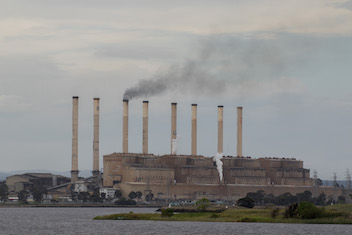While there are plenty of places where commas should be used and a few places where commas are optional, there are some places where commas should never be used:
- between the main focus of a sentence and the action it is performing: in technical terms, between the subject and verb
- between the action being performed in a sentence and the thing the action is being done to (where this information is given; many sentences don’t include this): in technical terms, between the verb and object
- between two things that are linked in time or space by a joining word: in technical terms, between nouns or noun phrases connected by a preposition
- between a short word that generally links one thing to another in time or space but is just introducing one thing. I know this sounds confusing; it makes a lot more sense if you understand the technical explanation: between a preposition and its object (and in later posts this year, I will explain these technical terms).
Generally, we understand these conventions without having to think about them. But there is another rule of thumb about commas – ‘put a comma where you would take a breath if you were reading the sentence aloud’ – that can sometimes lead us astray.
Consider this sentence
- The invisible mix of toxic gases from burning coal and other fossil fuels for a variety of domestic and industrial uses creates the greenhouse effect.

If you were reading this sentence aloud, you would probably take a breath after the word uses but to put a comma there is wrong:
- The invisible mix of toxic gases from burning coal and other fossil fuels for a variety of domestic and industrial uses, creates the greenhouse effect.
Why is this wrong? Remember: the purpose of commas is to group words that belong together. While all of those words at the start of the sentence belong together, they also belong with the word that describes what they are doing – creates (the action they are performing) – and, since they are given meaning by the action they are performing, they should not separated from it (or the sentence loses meaning).
Similarly, it is wrong to put a comma after the word creates.
- The invisible mix of toxic gases from burning coal and other fossil fuels for a variety of domestic and industrial uses creates, the greenhouse effect.
This time the comma is placed between the action being performed in the sentence and the thing that is being done (or created). Again, the meaning of these two parts of the sentence is inextricably linked; they cannot be divided and that is why we cannot use a comma there, even if you managed to get that far without having to pause for breath when reading the sentence aloud.
The ‘put a comma where you take a breath’ rule is often useful, because we generally do take a breath between groups of words that are linked in meaning. But when we write, we often construct very long groups of words (as in the two sample sentences above) that form one group for meaning. We may struggle to read such a long sentence without pausing for breath but that doesn’t mean it requires a comma.

Let’s now look at examples for the other two instances of where not to use commas.
- The cat on the mat was asleep.
The two concepts that are linked in space here are the cat and the mat, joined by the word on.
If we put a comma in the middle of this group of words, we break up the unity of meaning.
- The cat, on the mat was asleep.
Of course, this is a very short sentence, and we would not be led astray here by the ‘put a comma where you would take a breath’ rule. We could be confused if we had a longer sentence:
- As soon as the group of visitors entered Mrs Kaphoops’s shed, they could instantly see that the cat, on the mat was asleep.
You may or may not need to take a breath at cat if you read that aloud but you should certainly not put a comma there.

Finally, let’s look at the last case of where you should never use a comma:
- I planned my schedule with the best intentions.
The short word that generally joins things in time or space (the preposition) here is with. The group of words the best intentions derives its meaning from with (consider how the meaning changes if we use for or without instead of with). We cannot separate these words with a comma:
- I planned my schedule with, the best intentions.
Again, even if we had a longer sentence that might cause us to pause or just gulp for breath after with, a comma there is still wrong:
- I know how important deadlines are to my clients and consequently I planned my schedule with, the best intentions.
Of course, as with so much in English grammar, there are conditions. All these examples deal with the placement of one comma, and one comma only. It is quite possible to divide all these cases with another group of words that are parenthetically enclosed in a pair of commas:
- The invisible mix of toxic gases from burning coal and other fossil fuels for a variety of domestic and industrial uses, as we have done at great rates since the Industrial Revolution, creates the greenhouse effect.
- The invisible mix of toxic gases from burning coal and other fossil fuels for a variety of domestic and industrial uses creates, most noticeably over the last half-century, the greenhouse effect.
- As soon as the group of visitors entered Mrs Kaphoops’s shed, they could instantly see that the cat, a rather plump ginger, on the mat was asleep.
- I know how important deadlines are to my clients and consequently I planned my schedule with, as always, the best intentions.
In all these examples, another group of words with a single meaning has been inserted. The commas at each end are now necessary to mark off the groups of words that belong together so we can quickly grasp the meaning of the sentence. And as I’ve said before, that’s exactly why we use commas …

If you have found this post interesting, you can find a full index to my other posts on the index page. To be notified when I post a new topic, follow me on Facebook! If you have any particular questions you’d like me to answer in future posts, just send me a message. I’m always interested to learn what people think, and how you came across this site, so please post a comment.
If you think you would be interested in either my complete grammar course or an individual customised online course (particularly suited for people who don’t live in Melbourne), just click your preferred option.
2 comments on “Commas: where not to use them”